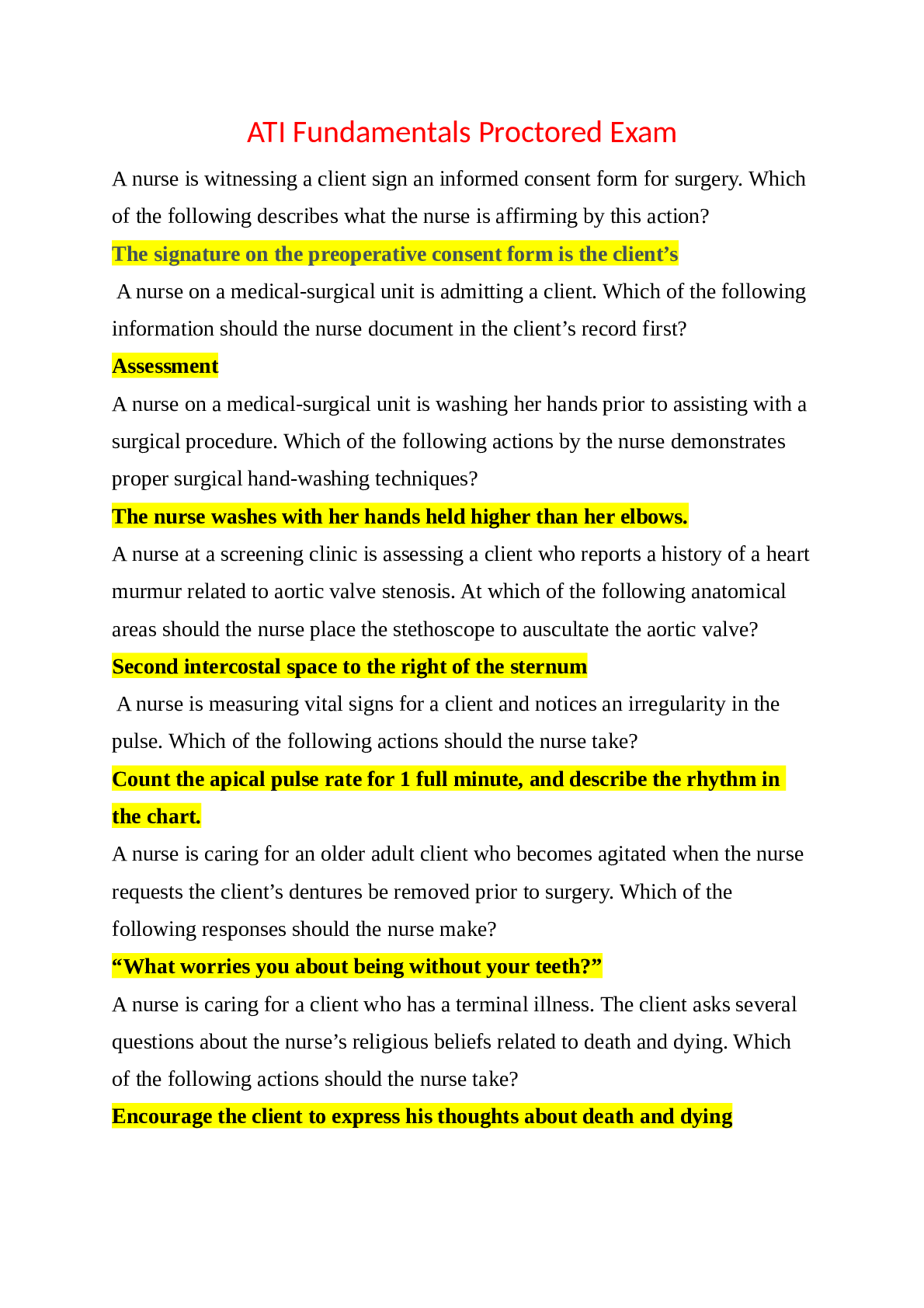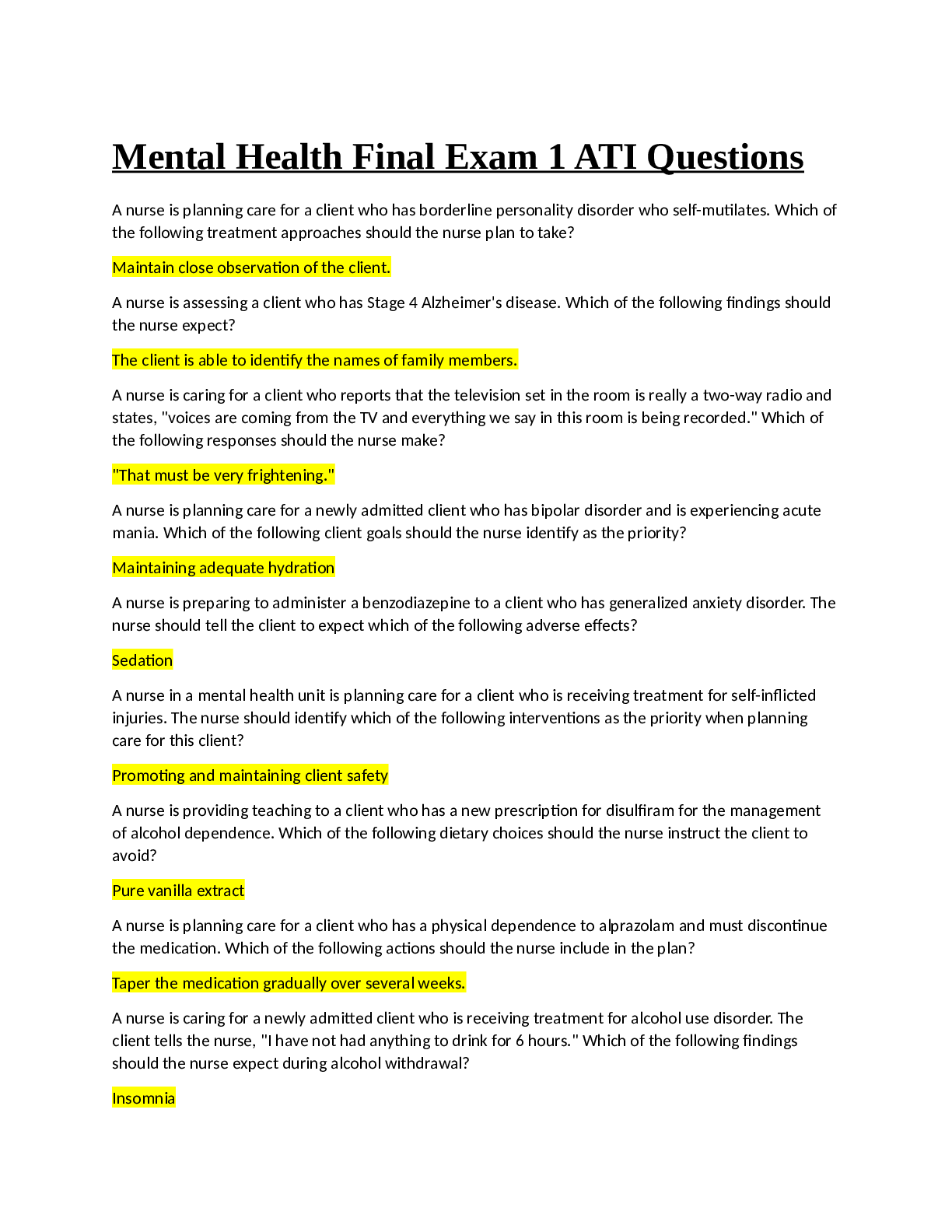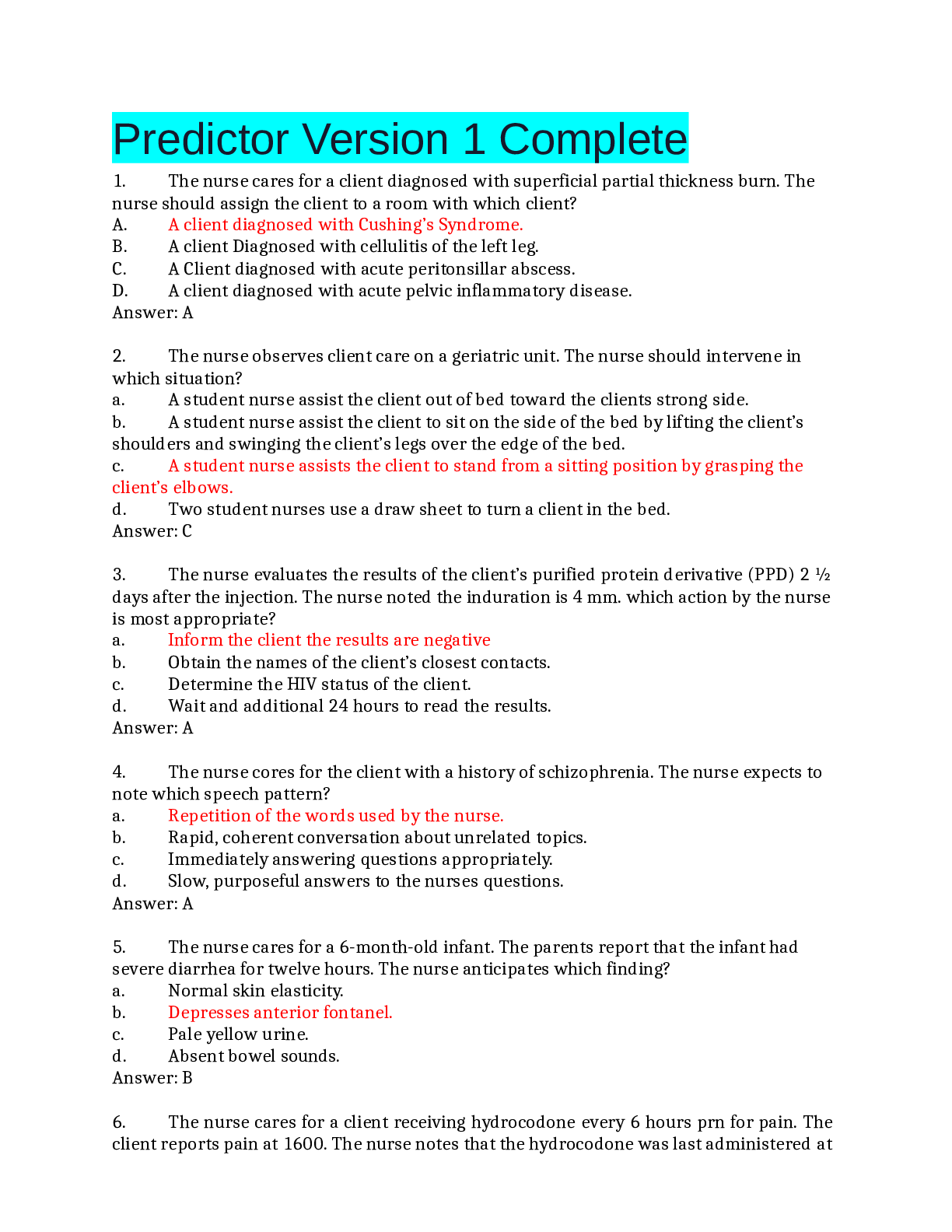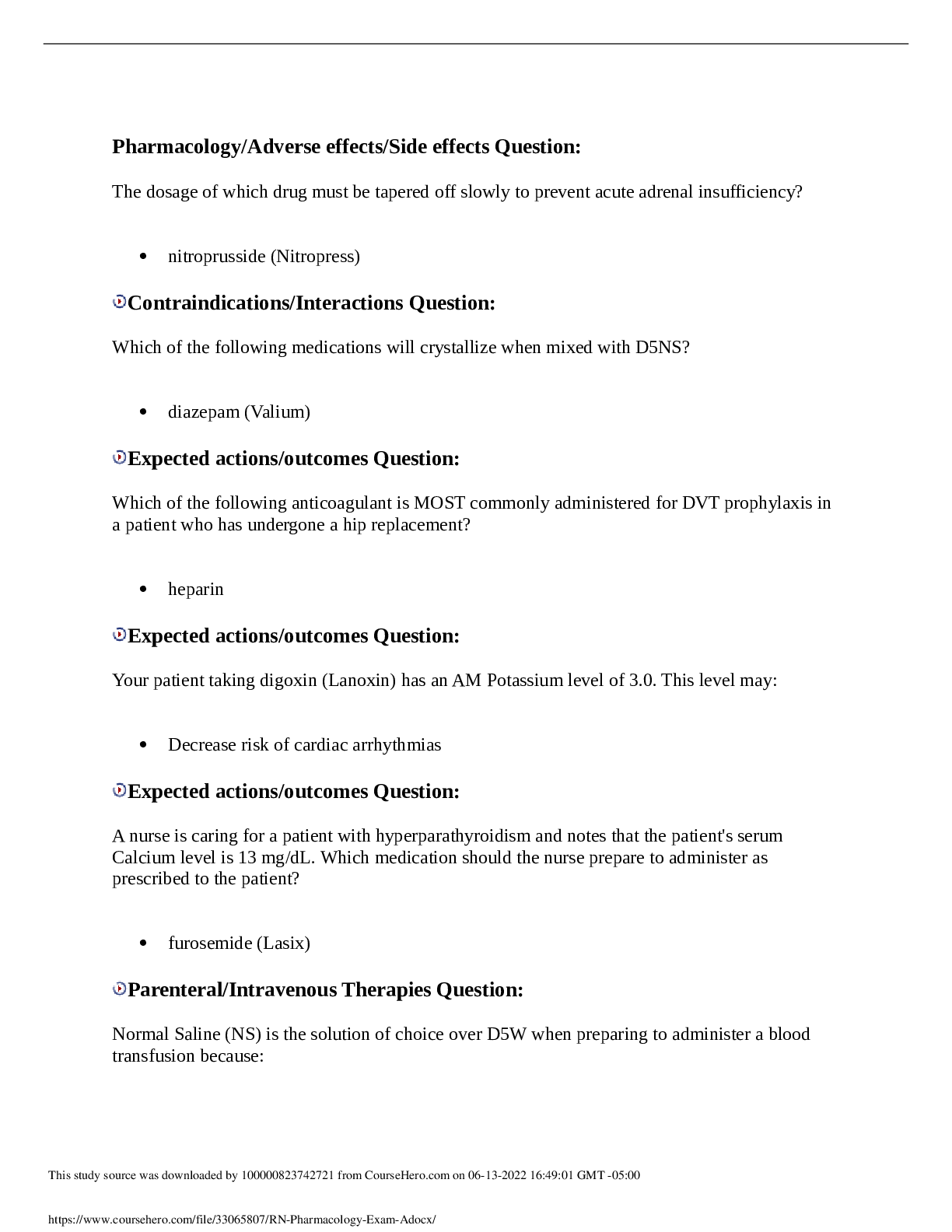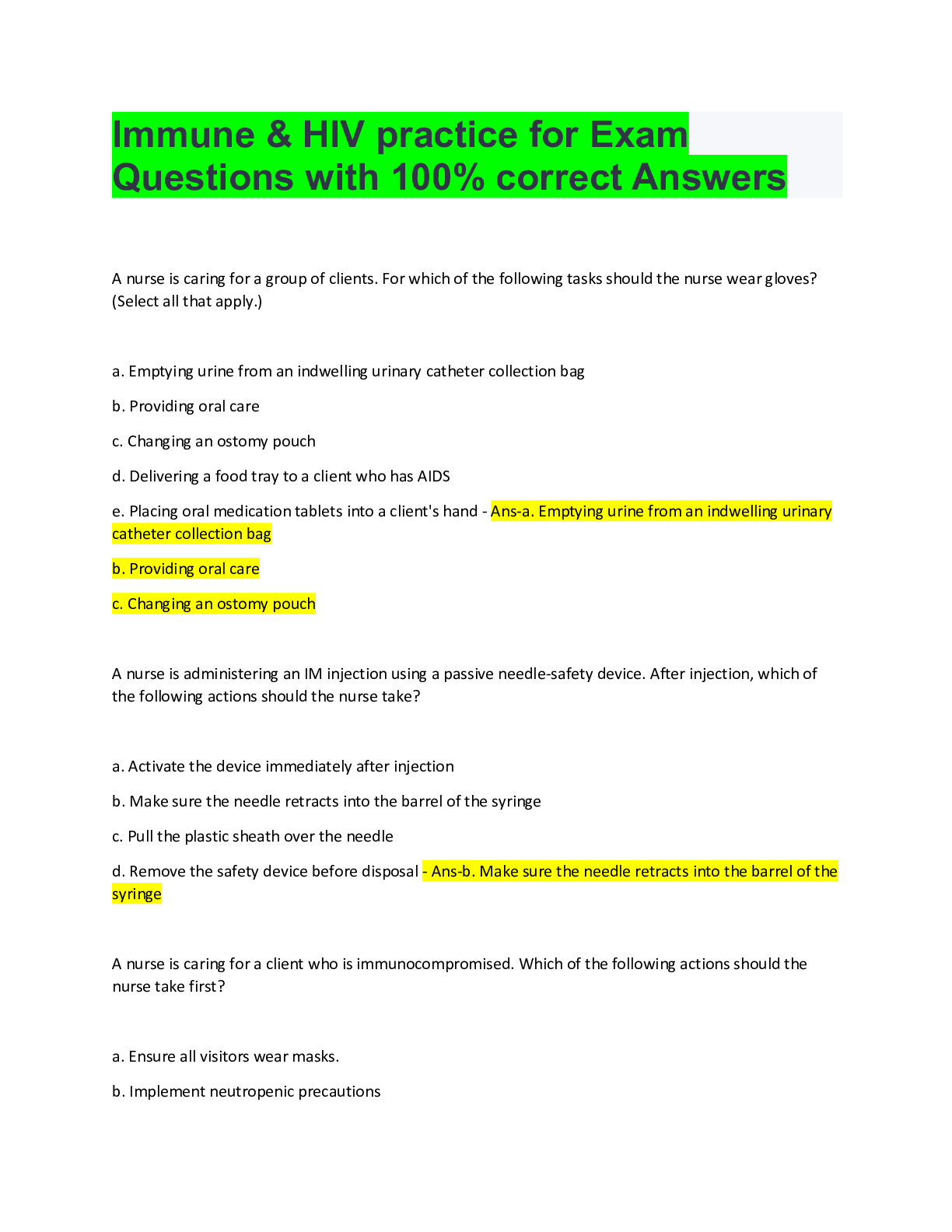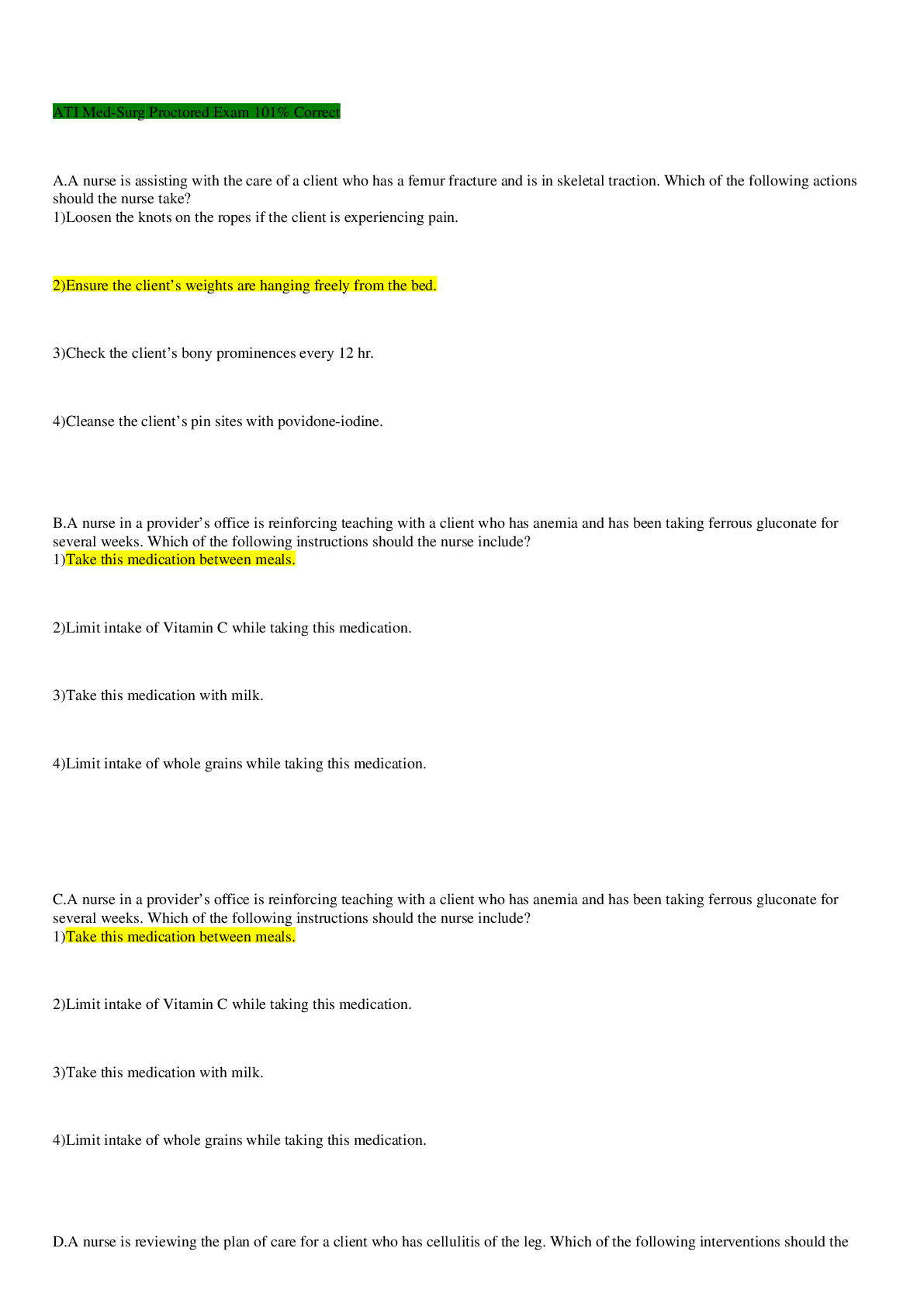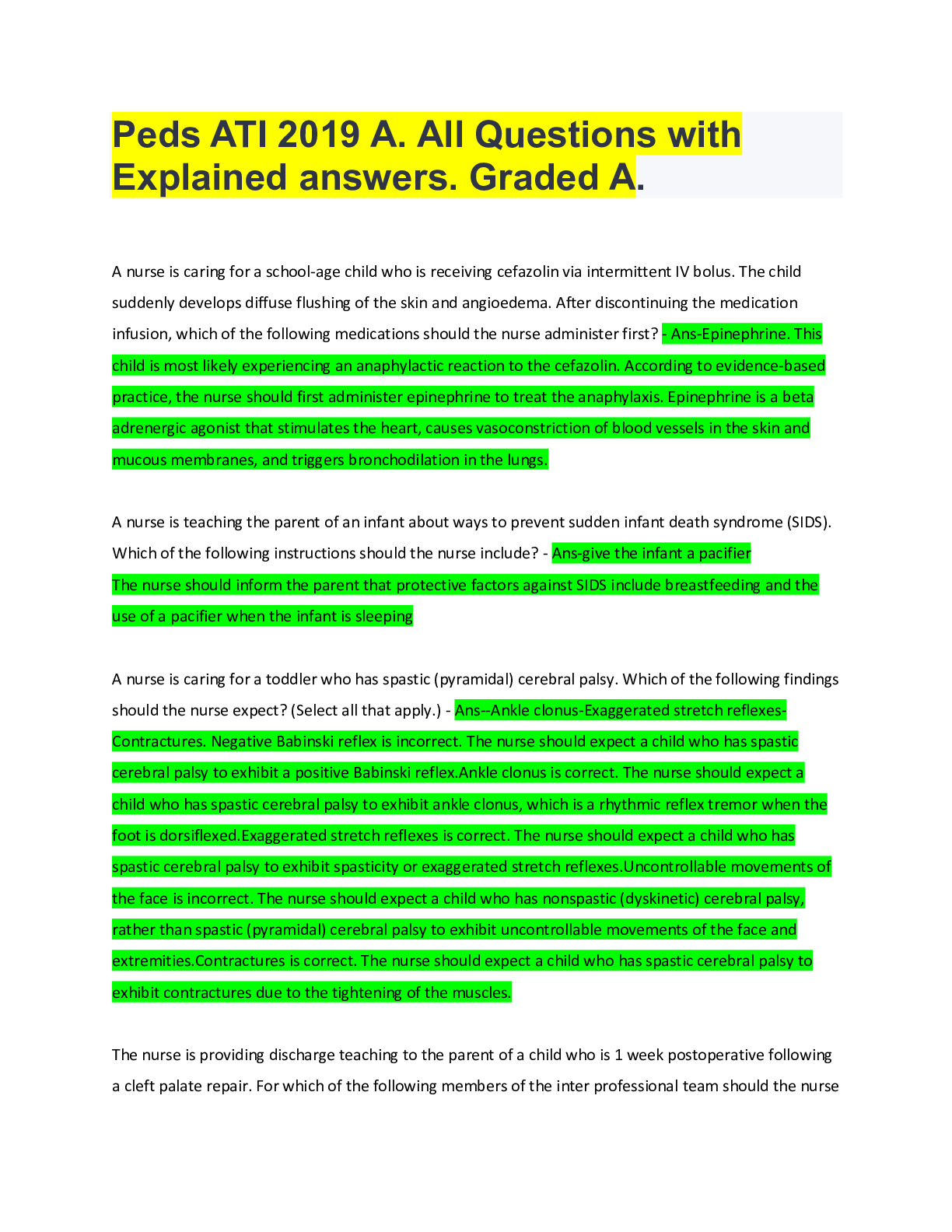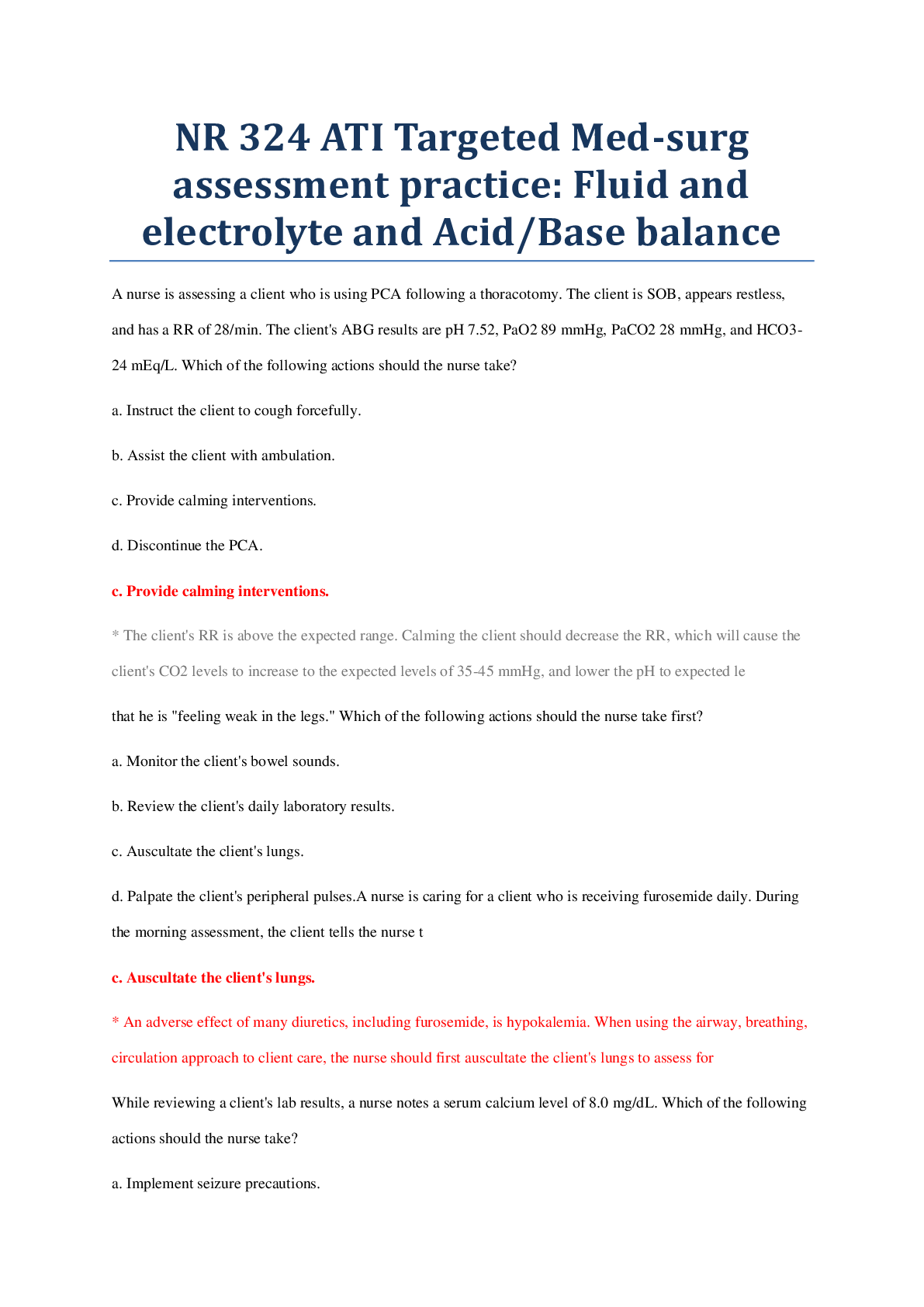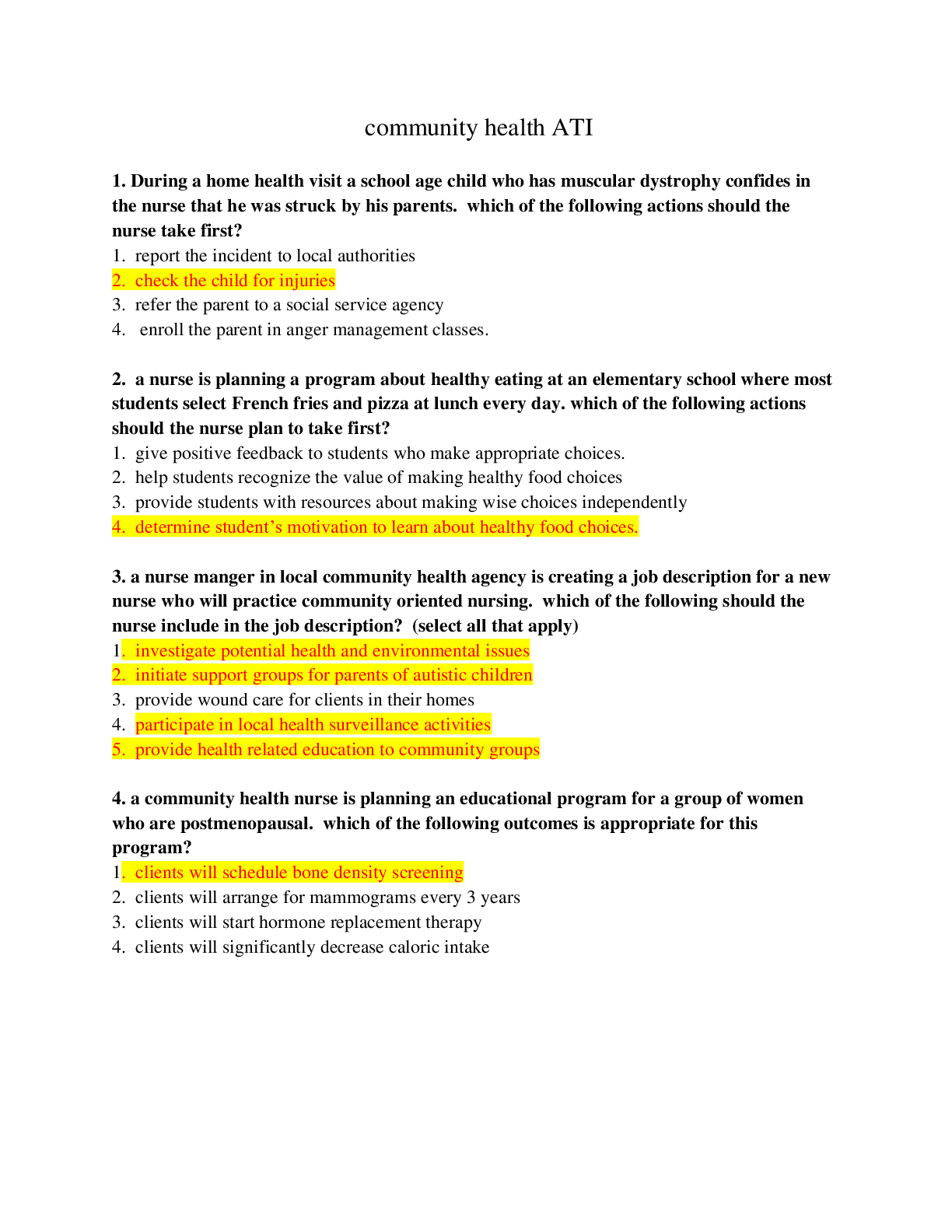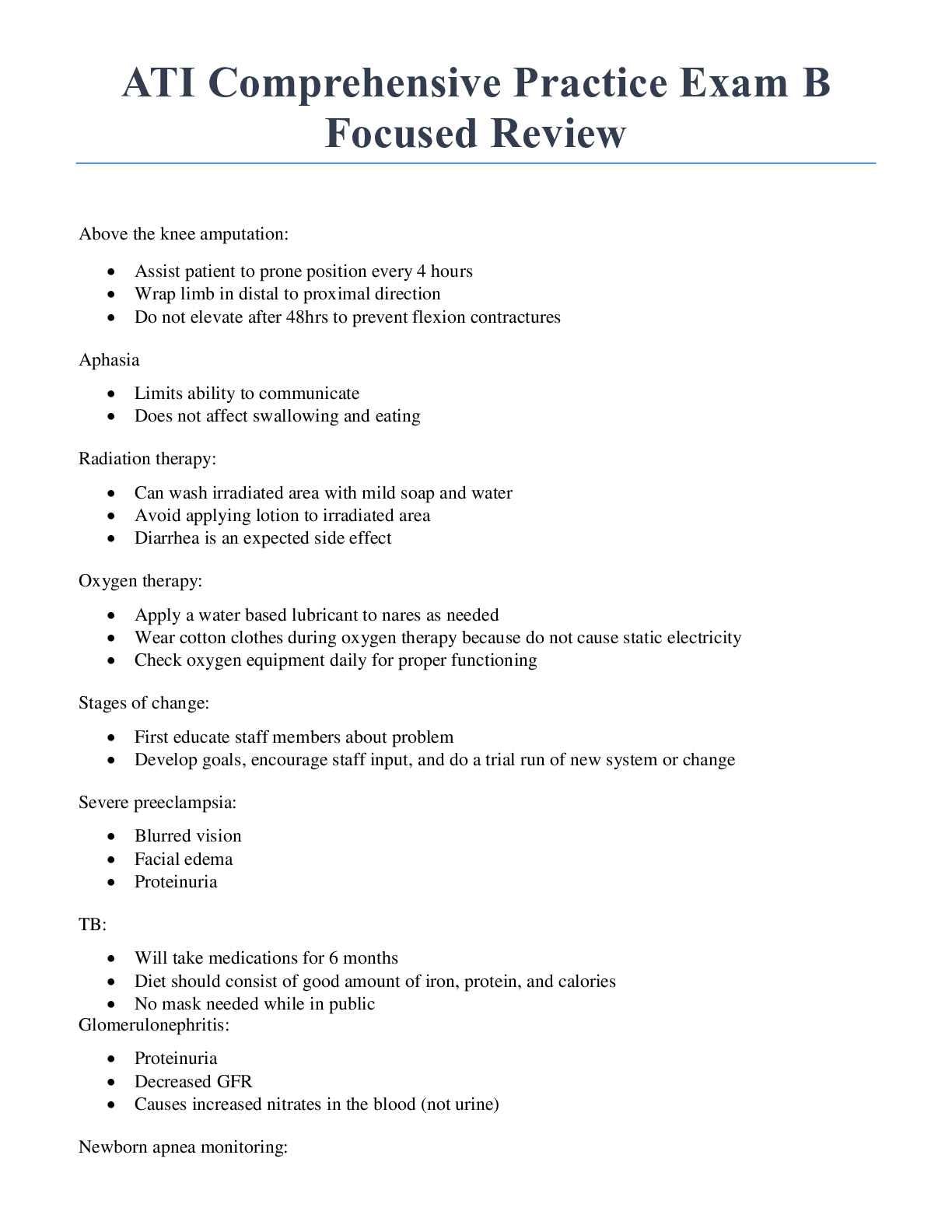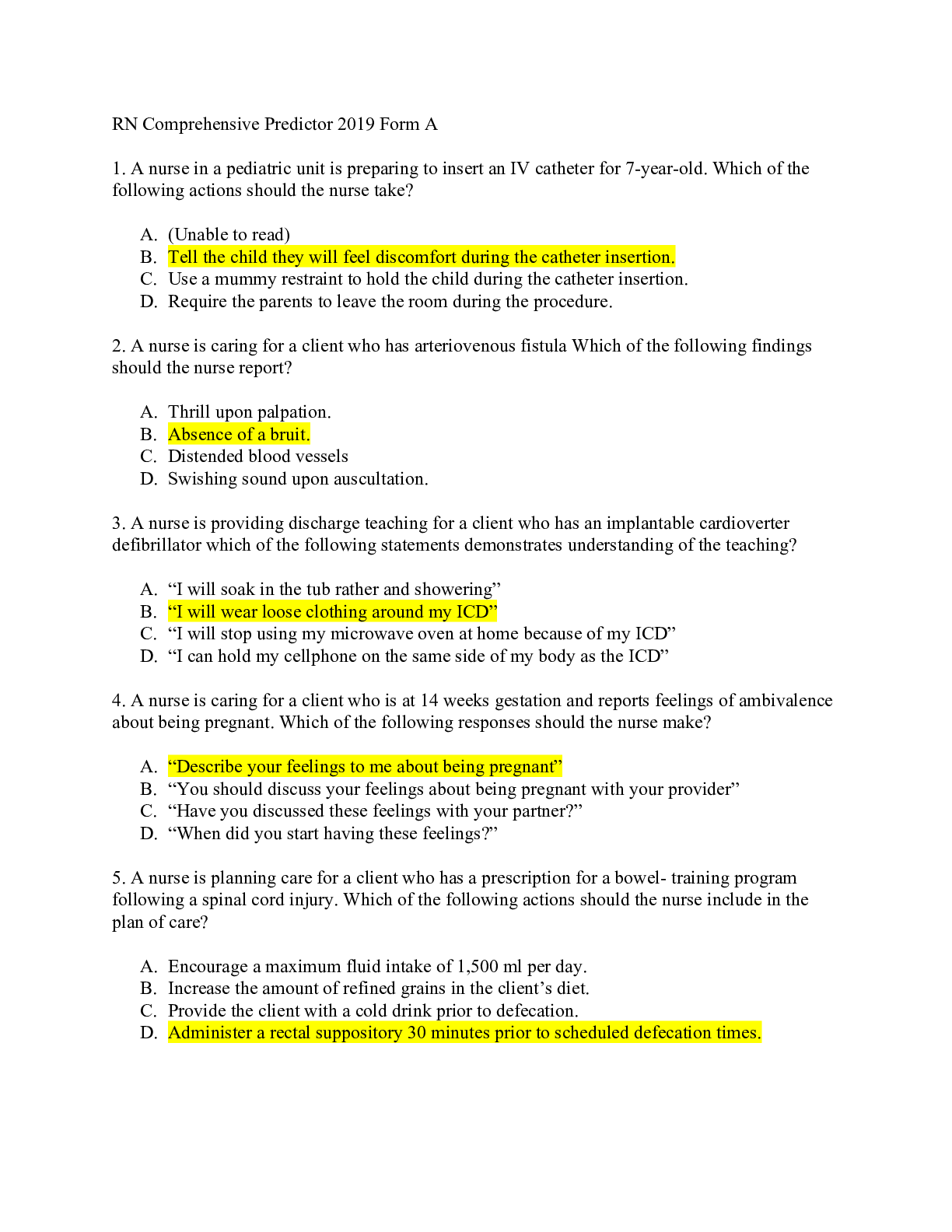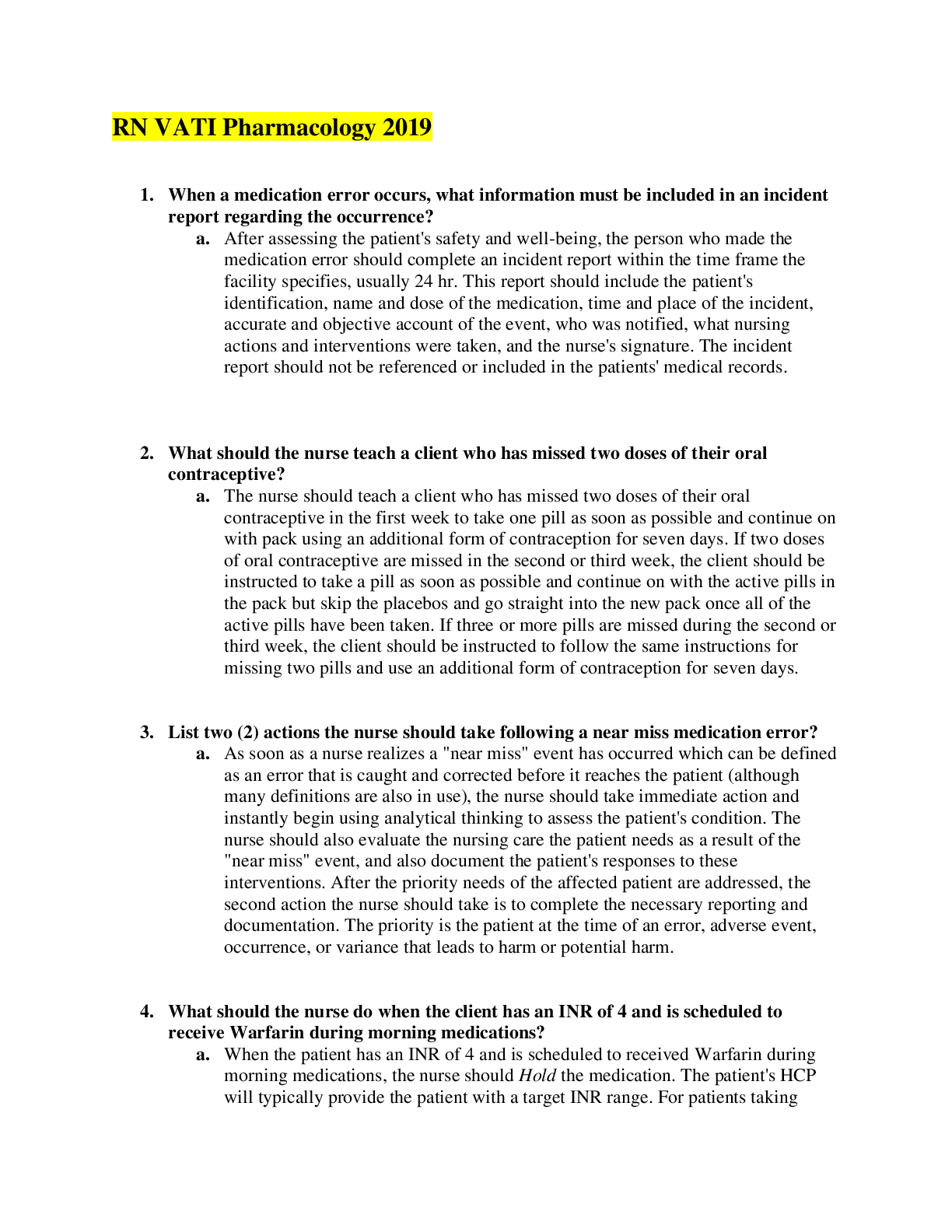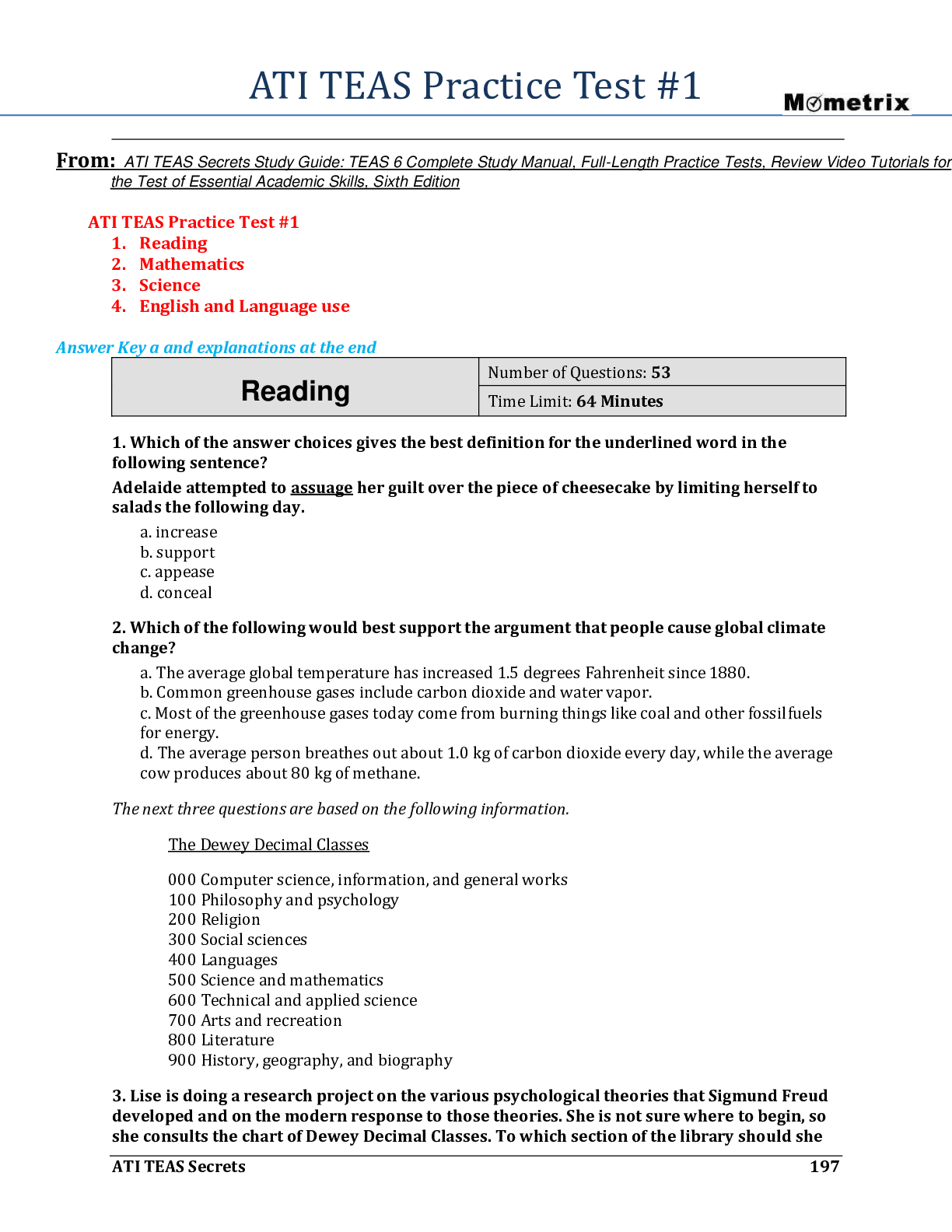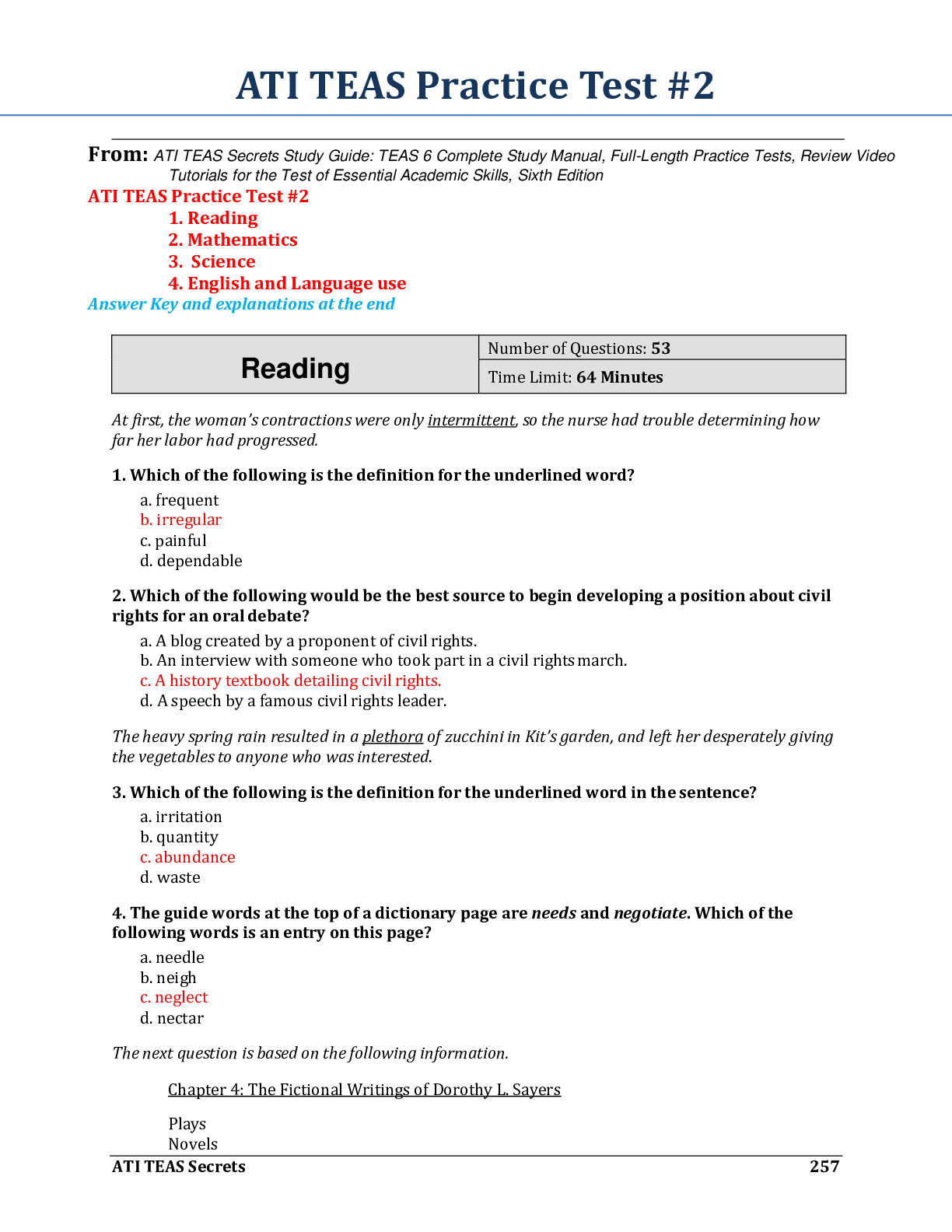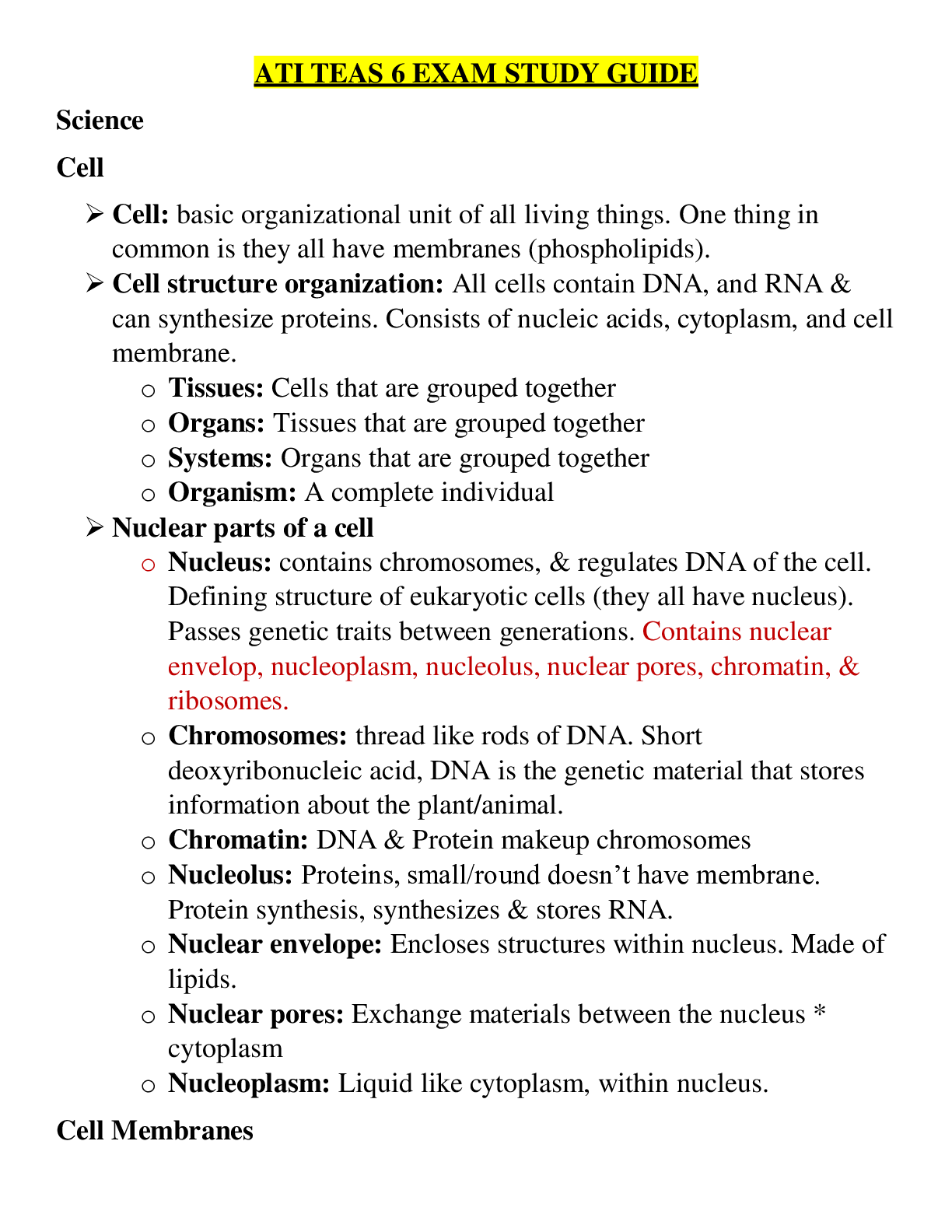Fundamentals Exam 2020-70ans
Document Content and Description Below
1. A nurse is reinforcing information with a client who wishes to complete their advance directives. Which of the following statements should the nurse make? a) “You must have advance directives i... n place in order to refuse recommended treatment.” b) “An attorney is needed in order for you to name a designee in your health care proxy.” c) “You can decline to have certain medical procedures performed in your living will.” d) “A living will can be an oral statement that you agree upon with your provider.” 2. A nurse is reinforcing teaching with a client who is premenopausal. Which of the following statements by the client indicates in understanding of the teaching? a) “I should stop receiving Papanicolaou tests once I reach menopause.” b) “The best time to perform a breast self-examination is on the first day of my period.” c) “I can expect to have regular periods until I am in menopause.” d) “I might have headaches due to a decline in my estrogen levels.” 3. A nurse in a provider’s office is calculating a client’s BMI. Which of the following pieces of the client data should the nurse use as a part of the calculation? a) Daily calorie intake b) Height c) Abdominal girth d) Blood pressure 4. A nurse is reinforcing teaching with a client about the use of a peak flow meter. Which of the following actions should the nurse make first? a) Determine the client’s knowledge of the use of the peak flow meter. b) Show the client a video demonstration of peak flow meter use. c) Observe the client using the peak flow meter. d) Emphasize the importance of the daily use of the peak flow meter. 5. A nurse is collecting data about a client’s oral care. The client wears dentures and reports having mouth sores. The nurse should identify which of the following oral care practices by the client as a possible cause of the mouth sores? a) Soaks dentures in water after removal. b) Applies an adhesive to seal dentures in place. c) Wears dentures while sleeping at night. d) Rinses dentures after meals. 6. A nurse is preparing to administer a medication from an ampule. Which of the following is an appropriate action for the nurse to make? a) Inject air into the ampule prior to drawing the medication into a syringe. b) Add 0.5 mL of diluent to the medication. c) Cleanse the tip of the ampule with an alcohol swab after opening. d) Use a filter needle to aspirate the medication. 7. A nurse on a medical-surgical unit is caring for a group of clients. Which of the following findings should the nurse identify as a safety hazard? a) An assistive personnel places a weight-sensitive sensor mat on the mattress beneath the client’s buttocks. b) An assistive personnel raises all four side rails of a client’s bed before leaving the room. c) A client who has bilateral wrist restraints has a capillary refill less than 2 seconds. d) A client who has a transcutaneous electrical nerve stimulation unit reports a buzzing sensation at the application site. 8. A nurse is caring for a client who is 2 days postoperative following a below-the-knee amputation. Which of the following statements by the client should the nurse identify as indicating an acceptance of the limb loss? a) “I stay awake at night because I keep thinking about my leg.” b) “I need to learn how to perform a dressing change on my leg.” c) “I know my family means well, but I don’t want visitors seeing my leg right now.” d) “I am going to have to find someone who can take care of my leg at home.” 9. A nurse on a medical-surgical unit is collecting data from a client who is postoperative following abdominal surgery. The client’s BP was 126/72 mm Hg 15 min ago. The nurse now finds that the client’s BP is 176/96 mm Hg. Which of the following actions should the nurse make? a) Measure the client’s BP in the other arm. b) Use a narrower cuff to repeat the BP measurement. c) Deflate the cuff faster when repeating the bp measurement. d) Request a prescription for an antihypertension medication. 10. A nurse is assisting with the admission of a client who has streptococcal pharyngitis. Which of the following precautions should the nurse make? a) Have the client’s visitors put on a gown before entering the room. b) Escort the client to a room with a negative airglow. c) Prohibit fresh flowers and plants in the client’s room. d) Wear a surgical mask when giving the client direct care. 11. A nurse is caring for a client who has dyspnea with an oxygen saturation of 88%. Which of the following images indicates the type of face mask the nurse should use to deliver the client a 90% oxygen concentration? 12. A nurse working in a rehabilitation unit is caring for a client who has dysphagia and has difficulty swallowing during meals. Which of the following actions should the nurse take to prevent the client from aspiration while eating? a) Add liquid to foods to thin consistency. b) Tilt the clients head slightly backward. c) Offer verbal support while the client is eating. d) Encourage socialization with others during meals. 13. A nurse in a provider’s office performs a fecal occult blood test with a positive result on a client. Which of the following clients may have a false positive result? a) A client who has a venous stasis ulcer. b) A client who takes an iron supplement. c) A client who has peripheral hematomas. d) A client who underwent a barium swallow study. 14. A nurse is caring for a client who is flushed and has temperature of 38.7 C (101.7 F). Which of the following actions should the nurse take? a) Give the client an alcohol sponge bath. b) Place cold packs on the client’s axillae. c) Place a fan to blow air across the client. d) Remove blankets from the client. 15. A nurse is caring for a client who has a hip fracture and plans to administer a pain medication prior to turning the client. Which of the following ethical principles is the nurse implementing? a) Beneficence. b) Fidelity. c) Autonomy. d) Veracity. 16. A nurse is caring for a client who was recently admitted to hospice care and tells the nurse “I am going to die, and my family is hoping for a cure. I am mad that they behave like everything will be fine.” Which of the following responses should the nurse make? a) “It sounds like you have given up and you want to stay mad at your family.” b) “Why do you think they don’t know what’s happening?” c) “You are feeling angry that your family continues to wish for a cure?” d) “I think you and I need to talk about your anger with your family.” 17. A nurse in a provider’s office is reviewing the medical record of an older adult who report’s having nausea and vomiting for the last 48 hrs. Which of the following findings indicate fluid volume deficit? (Select all that apply.) a) Dry mucous membranes. b) Decreased skin turgor. c) Heart rate 72/min. d) Distended neck veins. e) Blood pressure 88/62 mm Hg. 18. A nurse is caring for a client who refuses a prescribed medical procedure. Which of the following actions should the nurse take to act as the client’s advocate? a) Evaluate the client’s concerns and communicate them to the provider. b) Ask the client’s partner to find out why the client has refused the procedure. c) Explain the necessity of the procedure to the client. d) Contact the unit’s social worker to report the client’s refusal. 19. A nurse is assisting with scoliosis screenings for students at a public school. Which of the following findings should the nurse recognize as an indication of scoliosis? a) Expansion of the upper intercostal spaces. b) Increased convex curve of the cervical spine. c) Increased concave curve of the thoracic spine. d) Unequal height of the shoulders. 20. A nurse is disinfecting the room of a client who has a Clostridium difficile infection. Which of the following solutions should the nurse use? a) Isopropyl alcohol. b) Triclosan. c) Chlorhexidine. d) Chlorine bleach. [Show More]
Last updated: 1 year ago
Preview 1 out of 13 pages
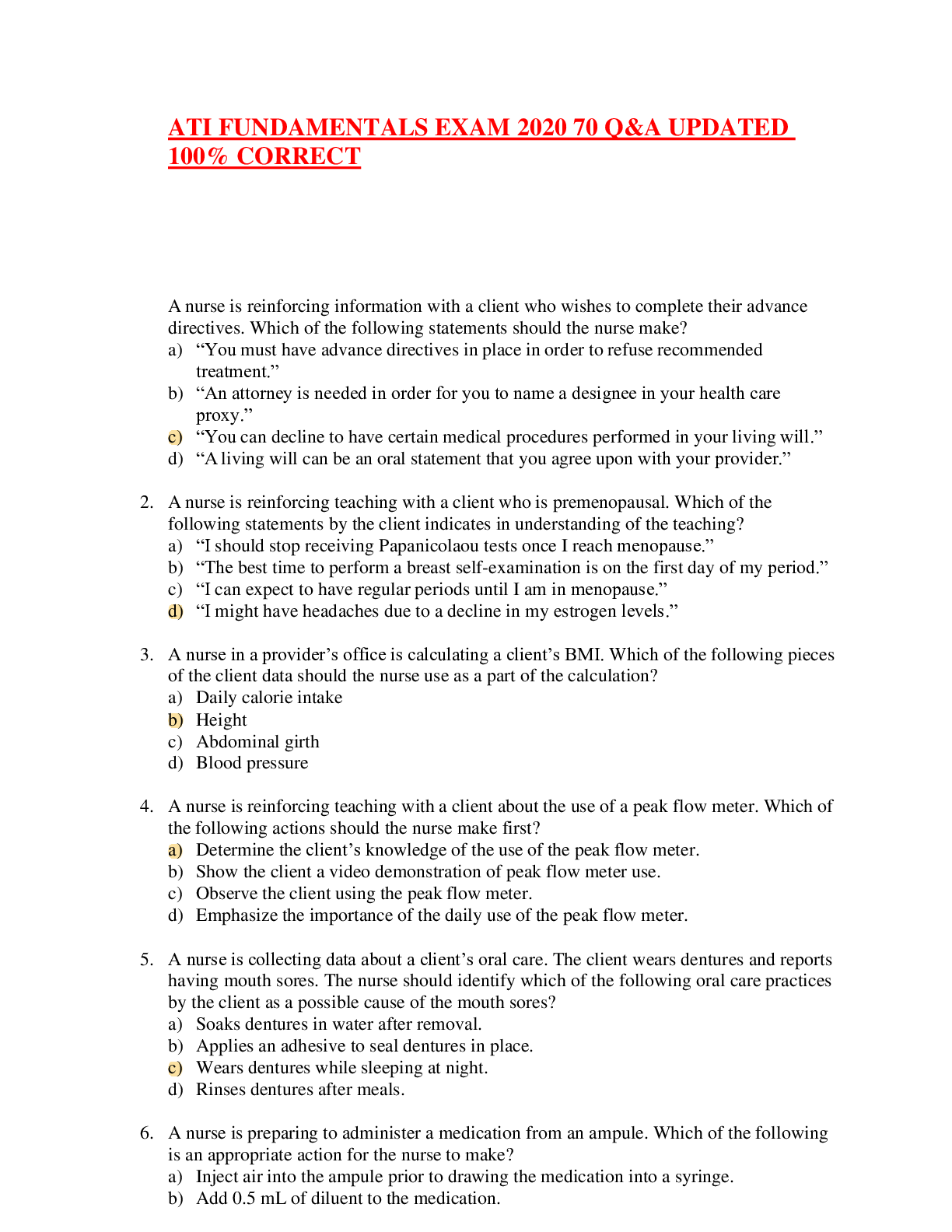
Buy this document to get the full access instantly
Instant Download Access after purchase
Add to cartInstant download
We Accept:

Reviews( 0 )
$14.00
Document information
Connected school, study & course
About the document
Uploaded On
Oct 01, 2021
Number of pages
13
Written in
Additional information
This document has been written for:
Uploaded
Oct 01, 2021
Downloads
0
Views
167


_Already Graded A.png)
